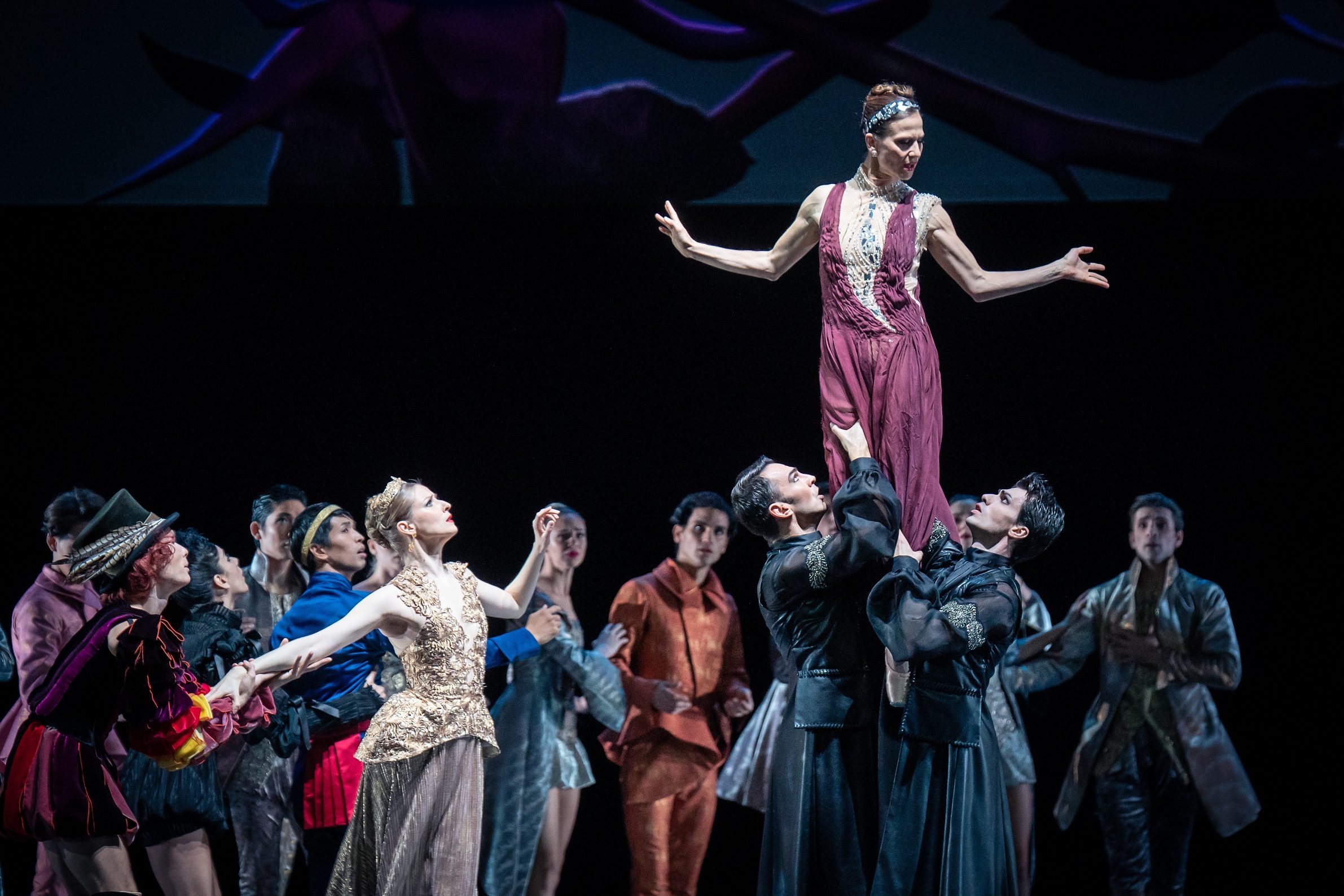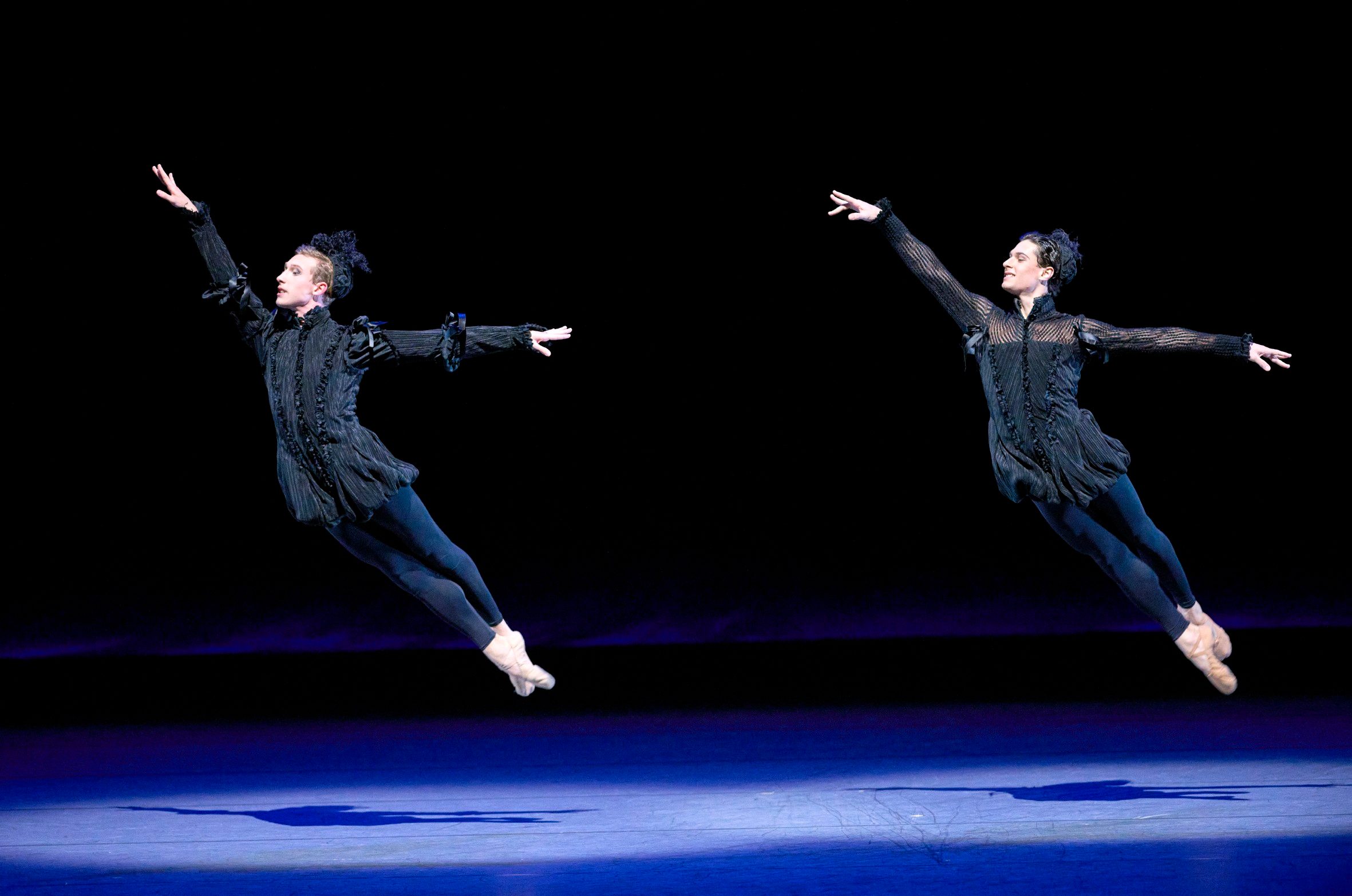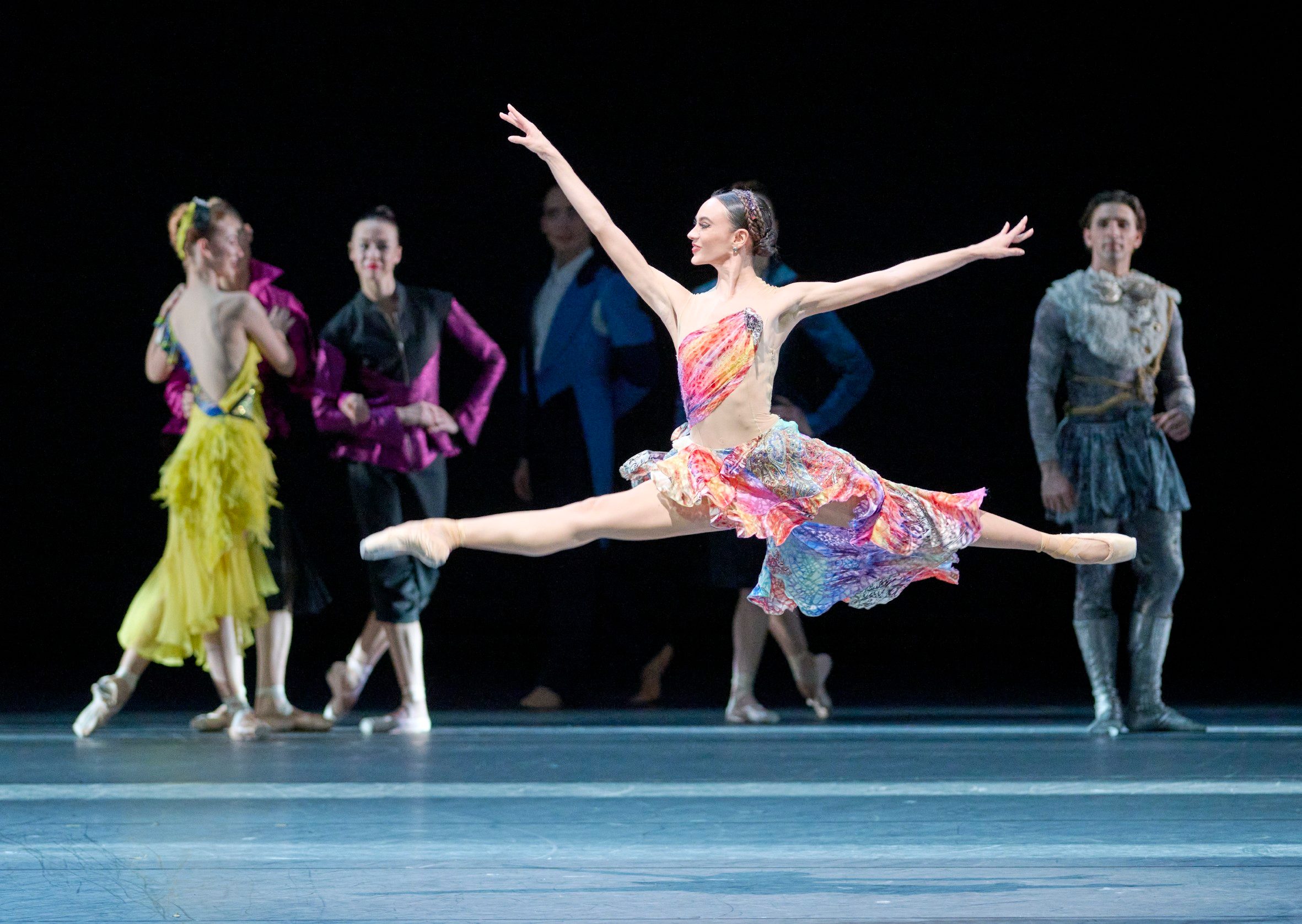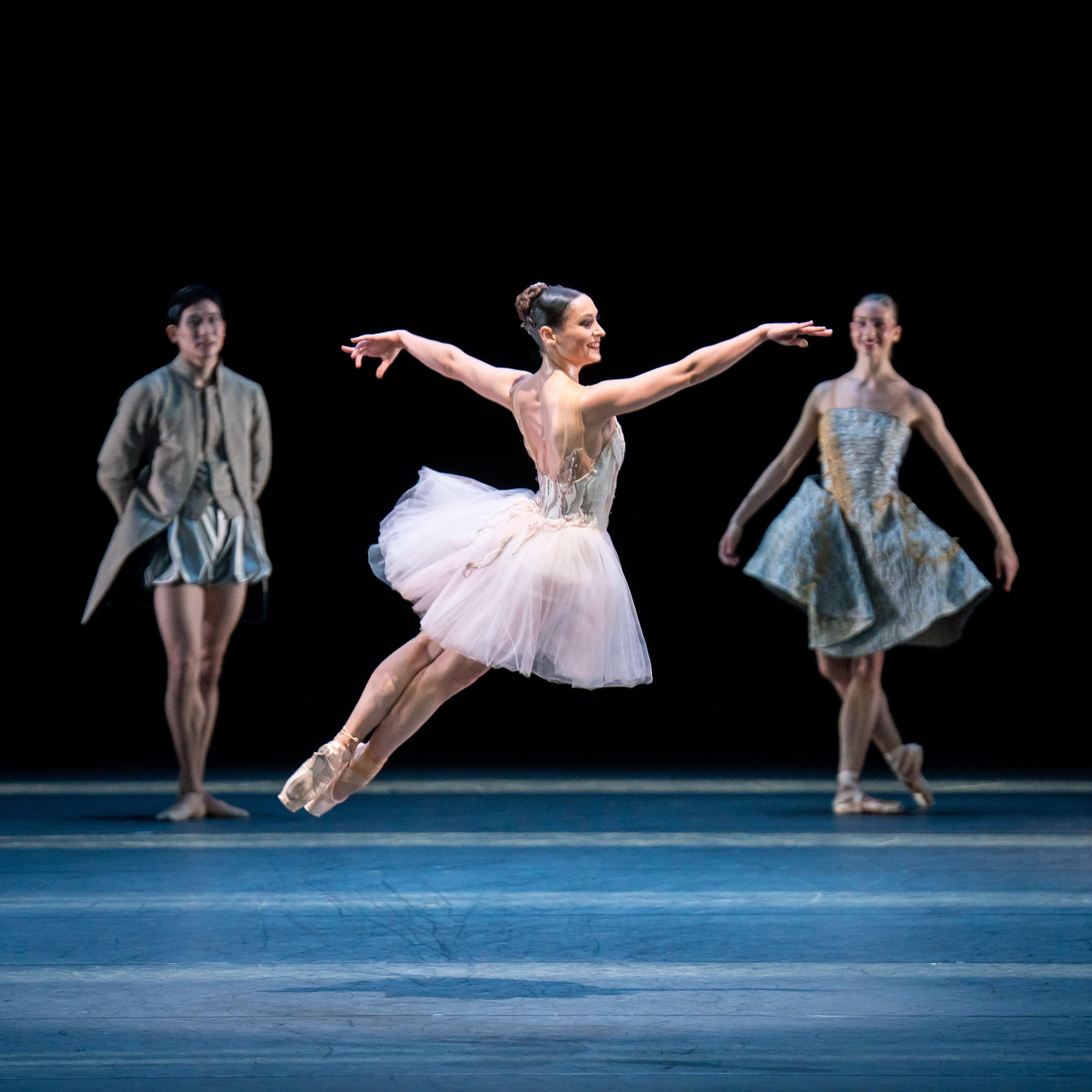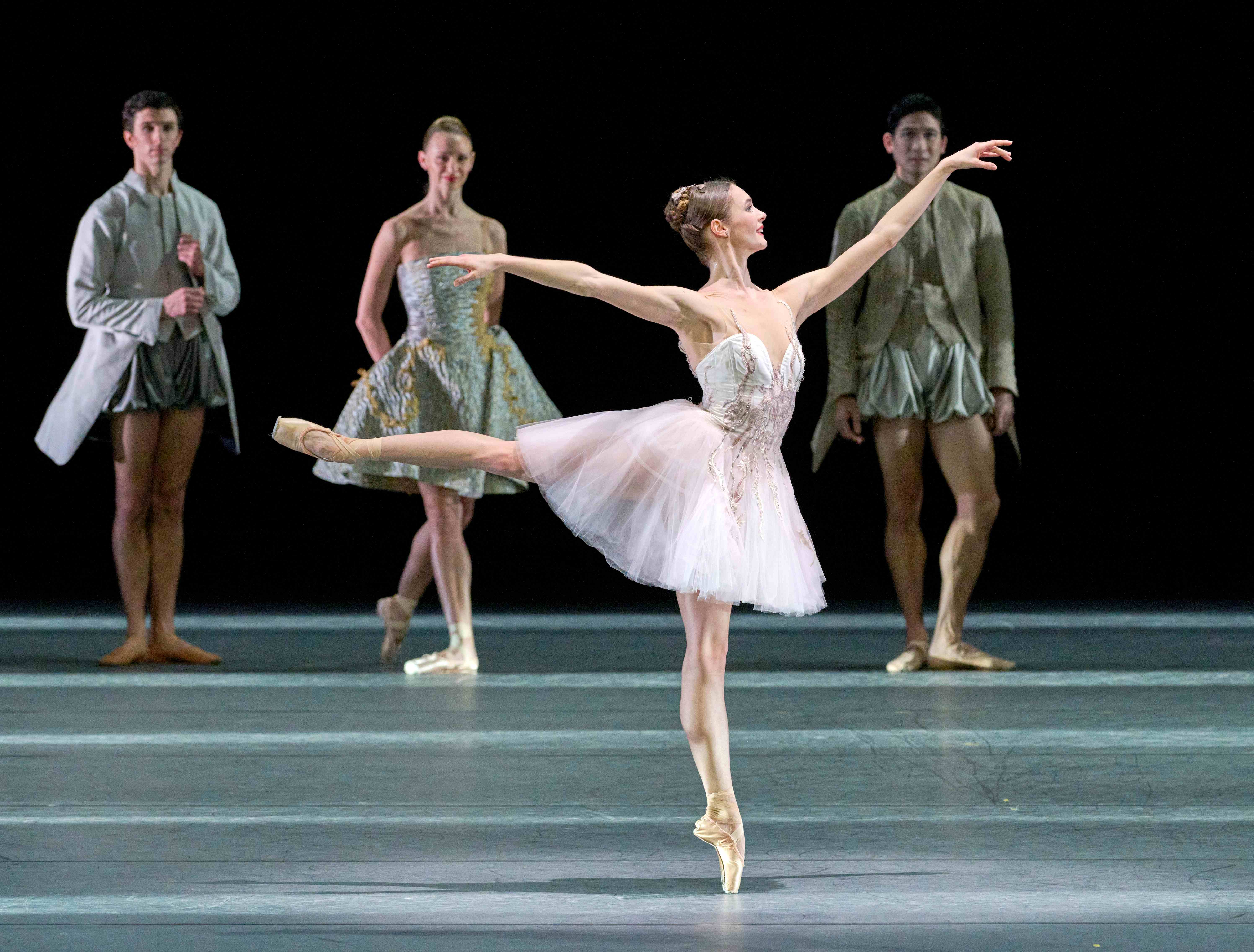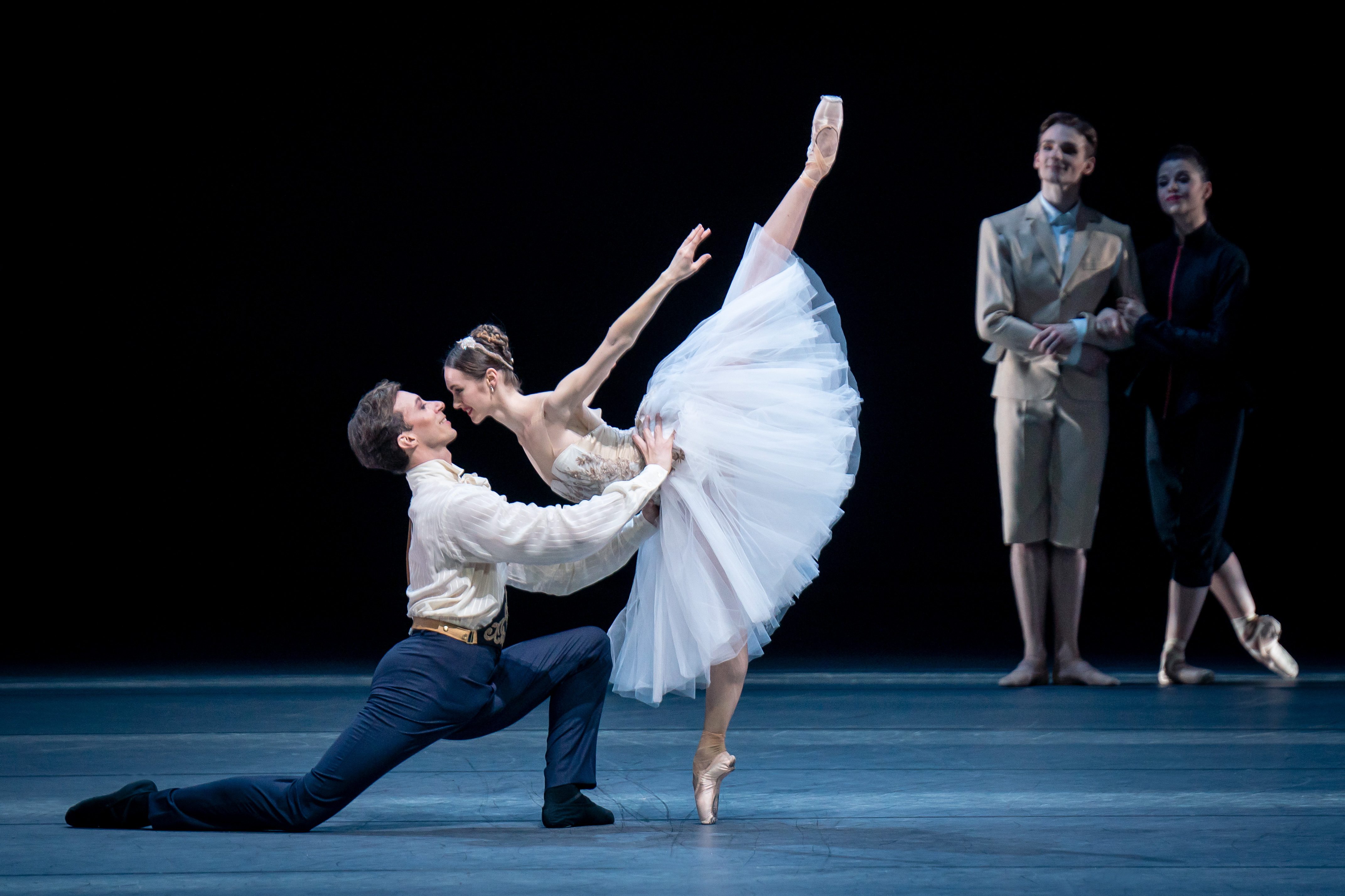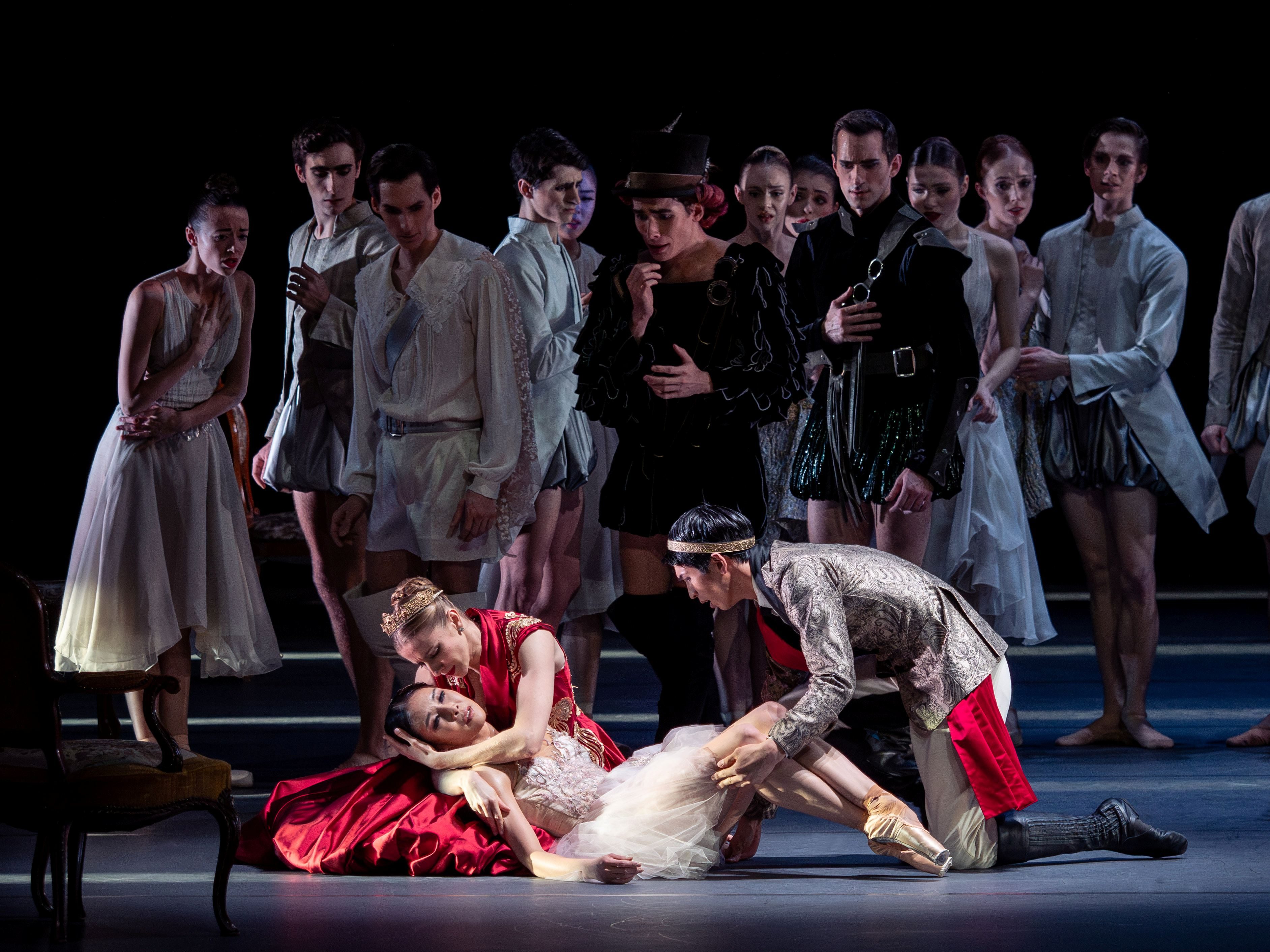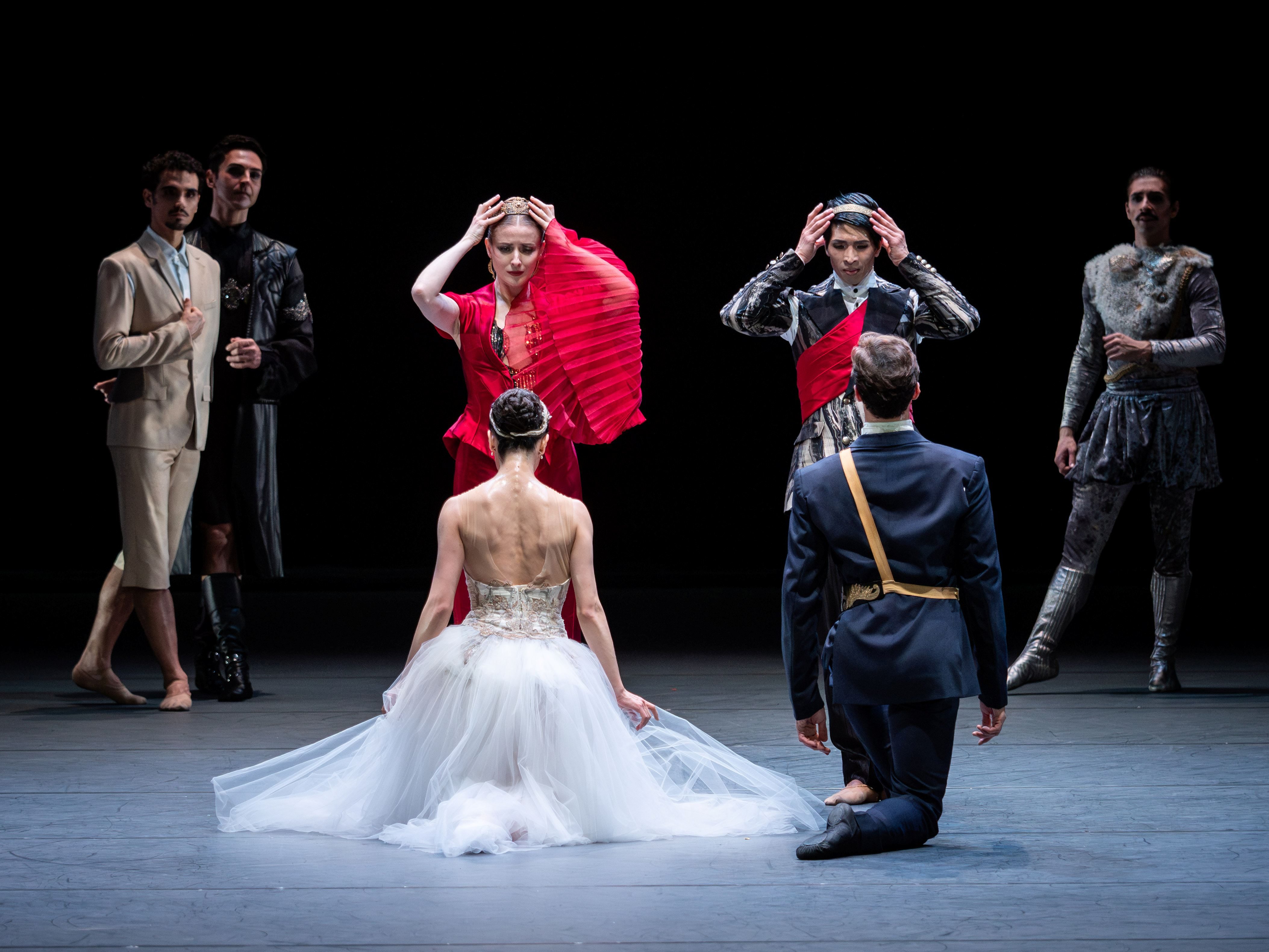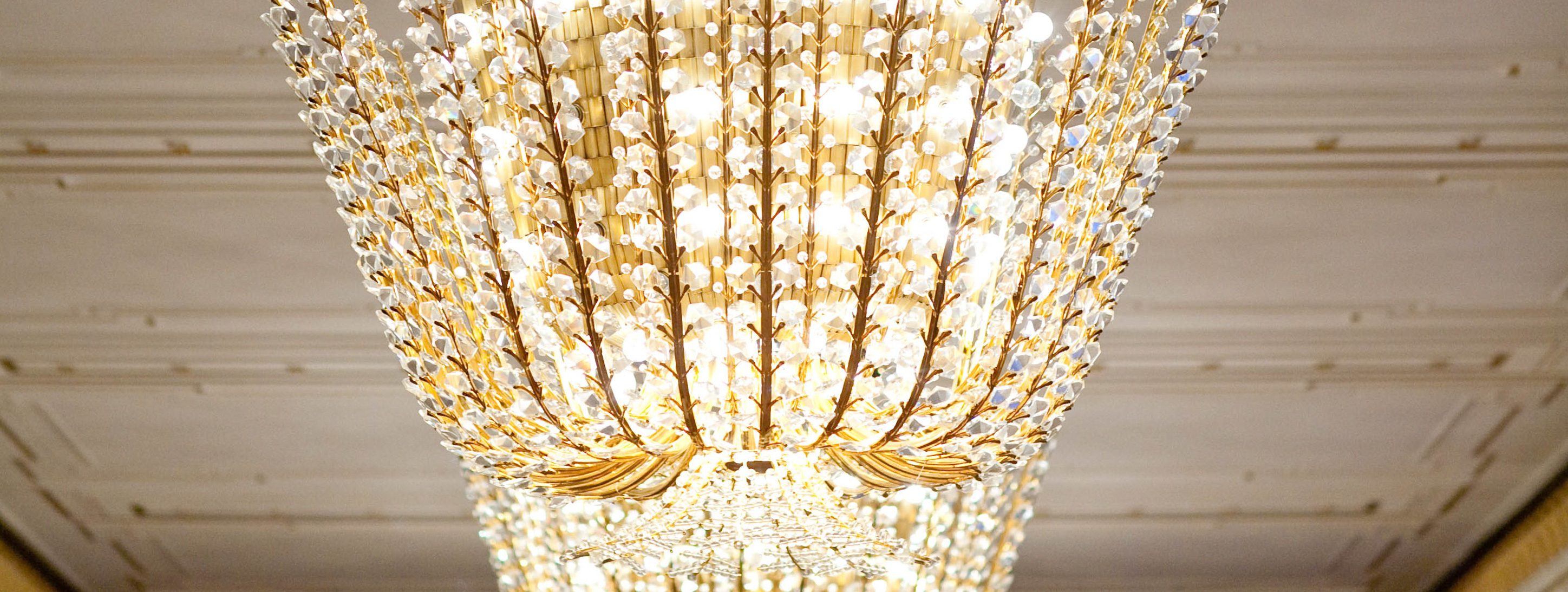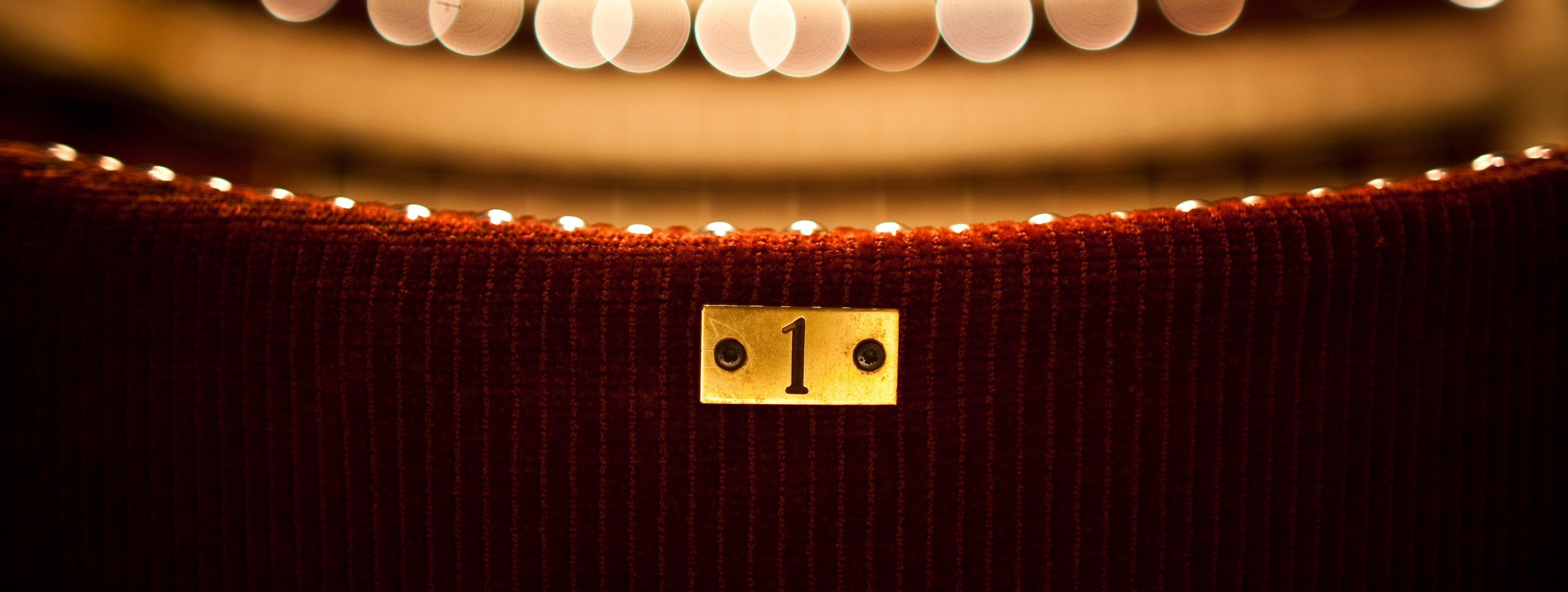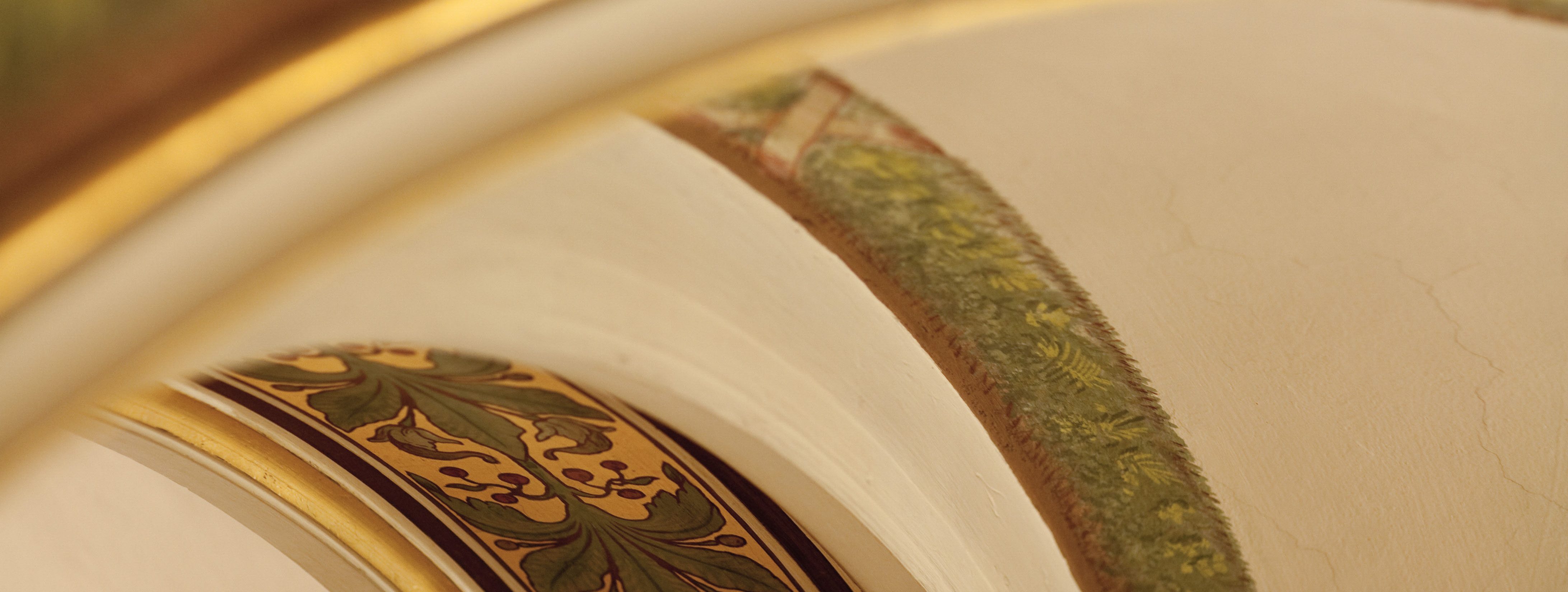
Short Summary
The story of a young woman who sleeps until she is kissed awake by a brave hero is a topos of many legends and fairy tales.
Sleeping Beauty is one of the most tender and beautiful of these. Martin Schläpfer was inspired by this to create a touching ballet about parents and children, love and power and the intrusion of mythical and natural beings into the life at a royal court – in dance images full of beauty, splendour, lightness, but also melancholy and disturbance.
Sleeping Beauty
Storyline
The King and Queen have wished for a child for many years. Nine months later, the Queen has given birth to a baby girl. She is to be called Aurora. Her parents give a magnificent party to celebrate her Christening. Amongst the many guests are six fairies, their partners and children. They bring generous gifts for the child. Then the Master of Ceremonies Catalabutte bursts in, agitated. He has made a mistake and failed to invite one fairy: Carabosse. Outraged at being slighted, she enters the room with her entourage. All attempts to calm her down are in vain. Carabosse places a curse on the Princess: once Aurora has grown to be a young woman, she will prick her finger on a spindle and die. But the Lilac Fairy stands up to Carabosse. She manages to mitigate the curse of death to a long sleep. The King and Queen lament Aurora’s fate – and their own. Catalabutte is devastated.
Aurora has grown up at the royal court, where she is protected from every danger. Today is her 16th birthday. Pages have the job of ensuring that all the security measures are followed, but discover that one of them cannot stop spinning – which is forbidden at court. The party is already in full swing when Aurora enters the ballroom. Everyone is enchanted by the young Princess – including the four Princes who have all come to ask for her hand in marriage. Suddenly a stranger appears among the guests and hands Aurora a spindle. Fascinated by this unfamiliar object, she starts to dance with it and – before anyone can stop her – she pricks herself. The stranger reveals herself to be Carabosse. However, the Lilac Fairy keeps her promise and prevents Aurora’s death. The Lilac Fairy and Carabosse face off against each other.
For a hundred years, people have spoken about an enchanted castle where a Princess and her entire court must sleep until a Prince breaks the spell. Désiré has heard this story too. He has already travelled through countless forests in a vain search for the sleeping beauty. But today feels different. Nature is talking to him – a Woman from the Woods, a Faun, the Lilac Fairy. He finds the path to Aurora and breaks the spell with a kiss. They both fall in love at first sight. The court, too, awakens from its enchanted sleep. Aurora is able to hug Catalabutte and her parents and introduce them to Prince Désiré. Carabosse is forced to acknowledge that she has been defeated. Désiré forgives her.
Aurora and Désiré celebrate their wedding. Numerous guests offer their congratulations, including the fairies, the Blue Bird, his Princess and two cats. Suddenly the room falls silent – the Woman from the Woods and the Faun have appeared. Prince Désiré brings Carabosse back to join the others. There is a final confrontation with the Lilac Fairy. Aurora and Désiré dance the wedding waltz. The King and Queen know that their time is now over. They pass on their crowns and the responsibilities that go with them to Aurora and Désiré and withdraw – along with the fairies, animals and woodland creatures.
While some regard Sleeping Beauty as a perfect specimen within the canon of Russian ballets, at the same time it also raises questions on numerous levels and retains its potential for new interpretations, not least due to the underlying fairy tale: A story about growing up, the development of a girl into a woman, a fairy world in the midst of everyday life at a royal court and the battle of the light against the dark.
“What fascinates me about Sleeping Beauty is the way the material, the music and its reception all interact together”, Martin Schläpfer comments: “on the one hand, Tchaikovsky’s score and of course the fairy tale as it is written in the books of Perrault and the Brothers Grimm, but on the other hand also what is often etched into the minds of the audience as as-it-were the ‘original ballet’. I want to try to find a path between these two that doesn’t break with everything that is there but is something other than just another version ‘after Marius Petipa’.” The result is a genuine ballet whose language of movement always speaks of the human being.
Even more than in Swan Lake and The Nutcracker, Tchaikovsky had worked the score of Sleeping Beauty into a symphonic form. The characters taken from Charles Perrault’s fairy tale La Belle au bois dormant, which was first published in 1697 in the anthology Les Contes de ma mère l’Oye, are subtly differentiated through their motifs, with the statement of the music and the details of the plot complementing each other perfectly. One of the score’s greatest admirers, Igor Stravinsky, wrote: “The pleasure it gave me lasted for days on end and in this work, I was delighted to find the same freshness, invention, strength and spirit over and over again. Every entrance, indeed every action that takes place on stage is always presented individually depending on the character of the person concerned and every number has its own personality.”
The orchestral work Ferne Landschaft II, which became the basis for Martin Schläpfer’s interpretation of the second act, is one of a series of pieces created from 1987 onwards, for which the Japanese composer Toshio Hosokawa was inspired by East Asian landscape painting and calligraphy and found a tonal language in which – according to the composer – “every note (...) touches with the power of nature” and thus receives something “that reaches beyond man”.
What the Frenchman Marius Petipa working in St. Petersburg staged for the first time at the Mariinsky Theatre on 15 January 1890 is one of the greatest events in the history of ballet. In close collaboration with Pyotr Ilyich Tchaikovsky and the multi-talented theatre director Ivan Alexandrovich Vsevolozhsky, who not only co-wrote the libretto, but also designed the costumes, a ballet was created that is unequalled in its musical composition, choreographic and dramaturgical structure, metaphorical intensity and the symbolic richness of its imagery.
While still a student at the Royal Ballet School in London, Martin Schläpfer was thrilled by the féerie Sleeping Beauty: “It was the classical ballet that I saw most in London, over and over again with casts including Jennifer Penney and David Wall, Lynn Seymour, Rudolf Nureyev and many others”, he recalls. “Later, when I was a dancer myself, the Blue Bird was one of my most beautiful and fascinating roles. This piece has never let go of me.” Since then, he has repeatedly explored the idea of choreographing Sleeping Beauty. In October 2022, he finally premiered his version with the Vienna State Ballet.

